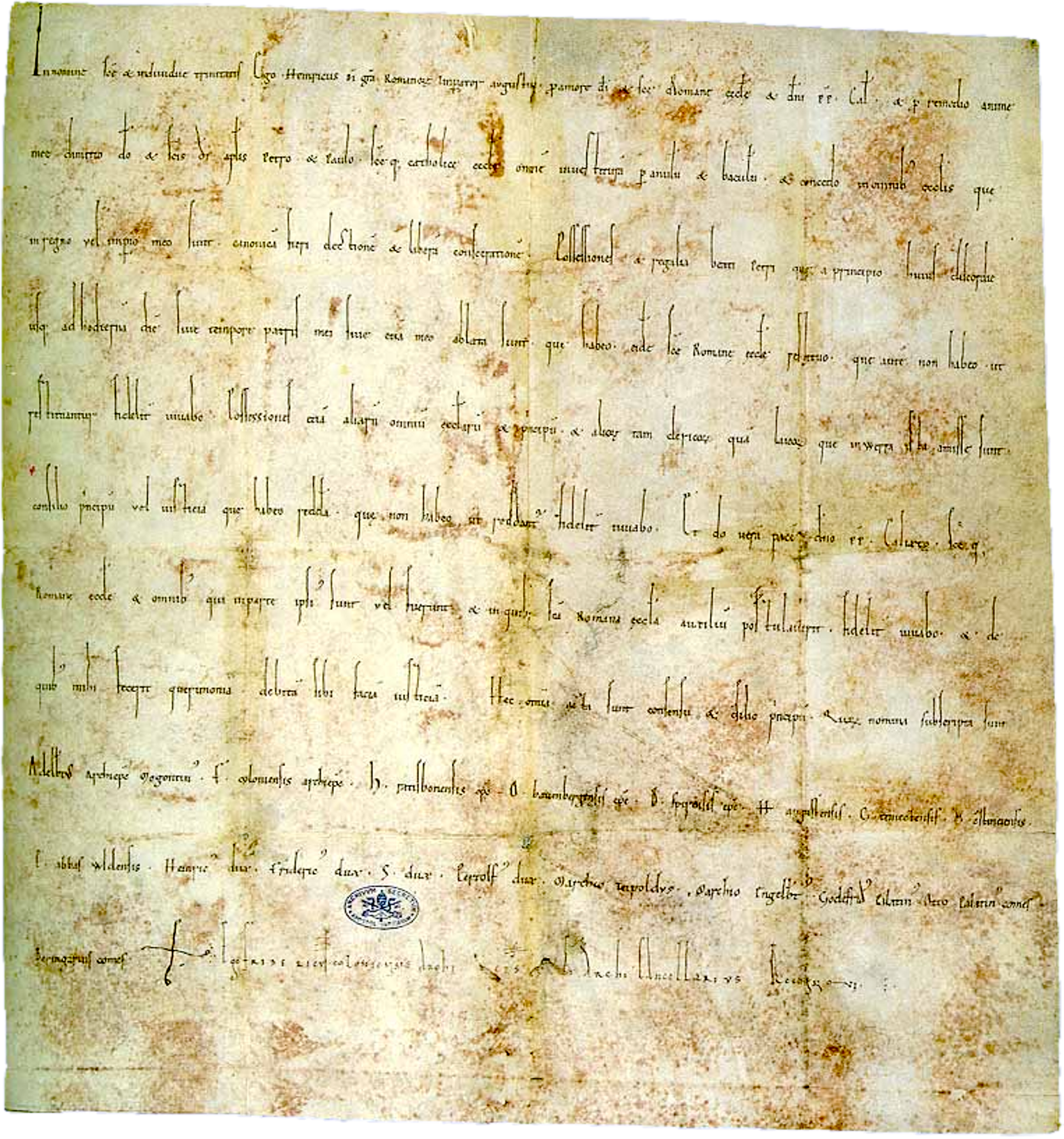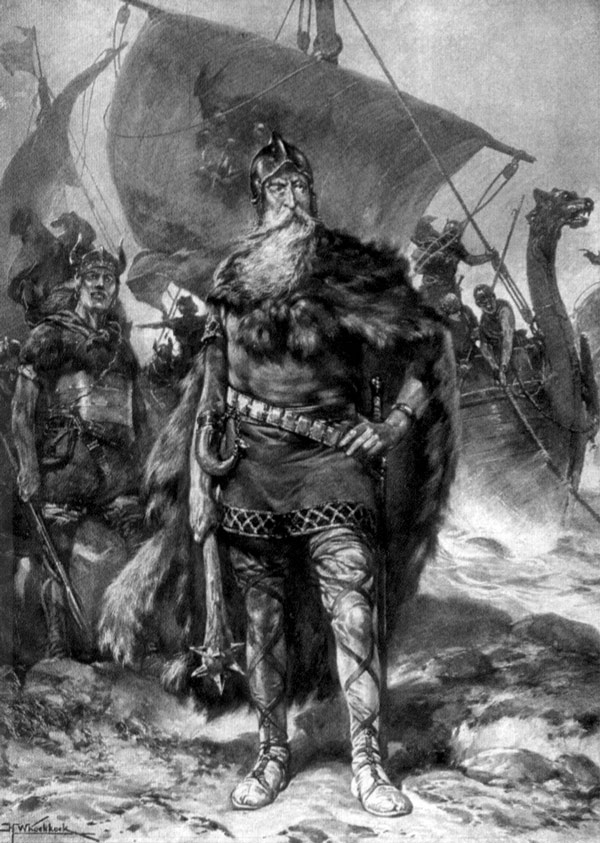|
Utrecht Schism
The Utrecht Schism ( nl, Utrechts Schisma) was a diocesan feud in the Prince-Bishopric of Utrecht from 1423 to 1449. The legitimate prince-bishop of Utrecht was at issue. The war of succession was fought by Zweder van Culemborg and his brother against Rudolf van Diepholt. The conflict mixed with the existing Utrecht factionalism between the Lichtenbergers and Lokhorsten (called 'Gunterlingen' until 1413) and with the Hook and Cod wars raging in the County of Holland. Some scholars consider the Utrecht Schism to have ended in 1429.Encarta-encyclopedie Winkler Prins (1993–2002) s.v. "Lichtenbergers en Lokhorsten". Microsoft Corporation/Het Spectrum. Background The Concordat of Worms (1122) stipulated that bishops in the Holy Roman Empire, to which the Prince-Bishopric of Utrecht belonged, should be elected by the church chapters and no longer appointed by the emperors, as had been customary since the introduction of the Imperial Church System until the Investiture Controversy ... [...More Info...] [...Related Items...] OR: [Wikipedia] [Google] [Baidu] |
Reinier Vinkeles
Reinier Vinkeles (1741 – 1816) was an 18th-century painter and engraver from the Northern Netherlands, who was the teacher of several talented artists. Biography Vinkeles was born in 1741, in Amsterdam. He studied for some ten years with Jan Punt and joined the Amsterdam '' Stadstekenacademie'' (City Drawing School) in 1762. In 1765 he travelled to Brabant with Jurriaan Andriessen and Izaäk Schmidt. In 1770 he left for Paris, where he studied for a year with Jacques-Philippe Le Bas and also met the Dutch artists Hermanus Numan and Izaak Jansz de Wit (1744-1809). When he returned to Amsterdam he worked making prints for book illustrations, including portraits, topographical and architectural prints, copies after Dutch masters, and theatre sets.Reinier Vinkeles in the RKD ... [...More Info...] [...Related Items...] OR: [Wikipedia] [Google] [Baidu] |
Walraven Van Meurs
Walraven is a Dutch given name and patronymic surname. The given name is first attested in 1294 and has the Germanic roots *wald- ("ruler") and *χraban- ("raven"). The German equivalent of the name is ''Walram''. at the Corpus of First Names in The Netherlands. Variants are ''Walrave'' and ''Walravens''. People with this name include: As a given name * (c.1370–1417), Dutch nobility, Stadtholder of Holland 1416–1417 * (1393–1456), Dutch Roman Catholic bishop * (1462–1531), Dutch n ...[...More Info...] [...Related Items...] OR: [Wikipedia] [Google] [Baidu] |
Cathedral Chapter
According to both Catholic and Anglican canon law, a cathedral chapter is a college of clerics ( chapter) formed to advise a bishop and, in the case of a vacancy of the episcopal see in some countries, to govern the diocese during the vacancy. In the Roman Catholic Church their creation is the purview of the pope. They can be "numbered", in which case they are provided with a fixed "prebend", or "unnumbered", in which case the bishop indicates the number of canons according to the rents. These chapters are made up of canons and other officers, while in the Church of England chapters now include a number of lay appointees. In some Church of England cathedrals there are two such bodies, the lesser and greater chapters, which have different functions. The smaller body usually consists of the residentiary members and is included in the larger one. Originally, it referred to a section of a monastic rule that was read out daily during the assembly of a group of canons or other cl ... [...More Info...] [...Related Items...] OR: [Wikipedia] [Google] [Baidu] |
Investiture Controversy
The Investiture Controversy, also called Investiture Contest ( German: ''Investiturstreit''; ), was a conflict between the Church and the state in medieval Europe over the ability to choose and install bishops (investiture) and abbots of monasteries and the pope himself. A series of popes in the 11th and 12th centuries undercut the power of the Holy Roman Emperor and other European monarchies, and the controversy led to nearly 50 years of conflict. It began as a power struggle between Pope Gregory VII and Henry IV (then King, later Holy Roman Emperor) in 1076. The conflict ended in 1122, when Pope Callixtus II and Emperor Henry V agreed on the Concordat of Worms. The agreement required bishops to swear an oath of fealty to the secular monarch, who held authority "by the lance" but left selection to the church. It affirmed the right of the church to invest bishops with sacred authority, symbolized by a ring and staff. In Germany (but not Italy and Burgundy), the Empero ... [...More Info...] [...Related Items...] OR: [Wikipedia] [Google] [Baidu] |
Holy Roman Emperor
The Holy Roman Emperor, originally and officially the Emperor of the Romans ( la, Imperator Romanorum, german: Kaiser der Römer) during the Middle Ages, and also known as the Roman-German Emperor since the early modern period ( la, Imperator Germanorum, german: Römisch-deutscher Kaiser, lit, Roman-German emperor), was the ruler and head of state of the Holy Roman Empire. The title was held in conjunction with the title of king of Italy (''Rex Italiae'') from the 8th to the 16th century, and, almost without interruption, with the title of king of Germany (''Rex Teutonicorum'', lit. "King of the Teutons") throughout the 12th to 18th centuries. The Holy Roman Emperor title provided the highest prestige among medieval Roman Catholic monarchs, because the empire was considered by the Roman Catholic Church to be the only successor of the Roman Empire during the Middle Ages and the early modern period. Thus, in theory and diplomacy, the emperors were considered ''primus i ... [...More Info...] [...Related Items...] OR: [Wikipedia] [Google] [Baidu] |
Chapter (religion)
A chapter ( la, capitulum or ') is one of several bodies of clergy in Roman Catholic, Old Catholic, Anglican, and Nordic Lutheran churches or their gatherings. Name The name derives from the habit of convening monks or canons for the reading of a chapter of the Bible or a heading of the order's rule. The 6th-century St Benedict directed that his monks begin their daily assemblies with such readings and over time expressions such as "coming together for the chapter" (') found their meaning transferred from the text to the meeting itself and then to the body gathering for it. The place of such meetings similarly became known as the "chapter house" or "room". Cathedral chapter A cathedral chapter is the body ("college") of advisors assisting the bishop of a diocese at the cathedral church. These were a development of the presbyteries (') made up of the priests and other church officials of cathedral cities in the early church. In the Catholic Church, they are ... [...More Info...] [...Related Items...] OR: [Wikipedia] [Google] [Baidu] |
Holy Roman Empire
The Holy Roman Empire was a political entity in Western, Central, and Southern Europe that developed during the Early Middle Ages and continued until its dissolution in 1806 during the Napoleonic Wars. From the accession of Otto I in 962 until the twelfth century, the Empire was the most powerful monarchy in Europe. Andrew Holt characterizes it as "perhaps the most powerful European state of the Middle Ages". The functioning of government depended on the harmonic cooperation (dubbed ''consensual rulership'' by Bernd Schneidmüller) between monarch and vassals but this harmony was disturbed during the Salian period. The empire reached the apex of territorial expansion and power under the House of Hohenstaufen in the mid-thirteenth century, but overextending led to partial collapse. On 25 December 800, Pope Leo III crowned the Frankish king Charlemagne as emperor, reviving the title in Western Europe, more than three centuries after the fall of the earlier ancient West ... [...More Info...] [...Related Items...] OR: [Wikipedia] [Google] [Baidu] |
Bishop
A bishop is an ordained clergy member who is entrusted with a position of authority and oversight in a religious institution. In Christianity, bishops are normally responsible for the governance of dioceses. The role or office of bishop is called episcopacy. Organizationally, several Christian denominations utilize ecclesiastical structures that call for the position of bishops, while other denominations have dispensed with this office, seeing it as a symbol of power. Bishops have also exercised political authority. Traditionally, bishops claim apostolic succession, a direct historical lineage dating back to the original Twelve Apostles or Saint Paul. The bishops are by doctrine understood as those who possess the full priesthood given by Jesus Christ, and therefore may ordain other clergy, including other bishops. A person ordained as a deacon, priest (i.e. presbyter), and then bishop is understood to hold the fullness of the ministerial priesthood, given responsibil ... [...More Info...] [...Related Items...] OR: [Wikipedia] [Google] [Baidu] |
Concordat Of Worms
The Concordat of Worms(; ) was an agreement between the Catholic Church and the Holy Roman Empire which regulated the procedure for the appointment of bishops and abbots in the Empire. Signed on 23 September 1122 in the German city of Worms by Pope Callixtus II and Emperor Henry V, the agreement set an end to the Investiture Controversy, a conflict between state and church over the right to appoint religious office holders that had begun in the middle of the 11th century. By signing the concordat, Henry renounced his right to invest bishops and abbots with ring and crosier, and opened ecclesiastical appointments in his realm to canonical elections. Callixtus, in turn, agreed to the presence of the emperor or his officials at the elections and granted the emperor the right to intervene in the case of disputed outcomes. The emperor was also allowed to perform a separate ceremony in which he would invest bishops and abbots with a sceptre, representing the imperial lands associated ... [...More Info...] [...Related Items...] OR: [Wikipedia] [Google] [Baidu] |
County Of Holland
The County of Holland was a State of the Holy Roman Empire and from 1433 part of the Burgundian Netherlands, from 1482 part of the Habsburg Netherlands and from 1581 onward the leading province of the Dutch Republic, of which it remained a part until the Batavian Revolution in 1795. The territory of the County of Holland corresponds roughly with the current provinces of North Holland and South Holland in the Netherlands. Etymology The oldest sources refer to the not clearly defined county as '' Frisia'', west of the Vlie (also known as West Frisia). Before 1101, sources talk about Frisian counts, but in this year Floris II, Count of Holland is mentioned as ''Florentius comes de Hollant'' (Floris, Count of Holland). Holland is probably from the Old Dutch , literally "wood land". The counts of Holland generally kept to this single title until 1291, when Floris V, Count of Holland decided to call himself ''Count of Holland and Zeeland, lord of Friesland''. This title was also u ... [...More Info...] [...Related Items...] OR: [Wikipedia] [Google] [Baidu] |
Hook And Cod Wars
The Hook and Cod wars ( nl, Hoekse en Kabeljauwse twisten) comprise a series of wars and battles in the County of Holland between 1350 and 1490. Most of these wars were fought over the title of count of Holland, but some have argued that the underlying reason was because of the power struggle of the bourgeois in the cities against the ruling nobility. The Cod faction generally consisted of the more progressive cities of Holland. The Hook faction consisted for a large part of the conservative noblemen. The origin of the name "Cod" is uncertain, but is most likely a case of reappropriation. Perhaps it derives from the arms of Bavaria, that look like the scales of a fish. The ''Hook'' refers to the hooked stick that is used to catch cod. Another possible explanation is that as a cod grows it tends to eat more, growing even bigger and eating even more, thus encapsulating how the noblemen perhaps saw the expanding middle classes of the time. Aftermath of William IV's reign (1 ... [...More Info...] [...Related Items...] OR: [Wikipedia] [Google] [Baidu] |





